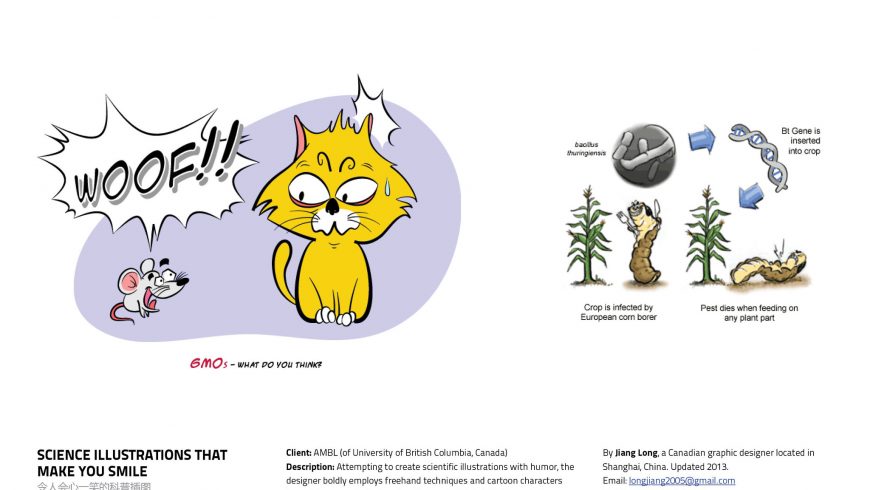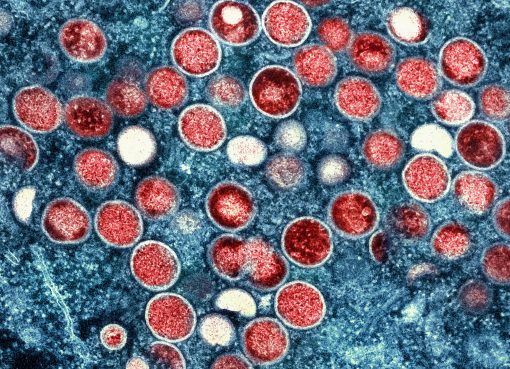Science and technology came a long way forward in the 21st century. To overcome the increasing demand of food products, pharmaceuticals and petrochemicals with the increasing population of the world, scientists had to look beyond the conventional products. It all started with the “Green revolution” initiated by the Nobel peace prize winner Norman Borlaug when he introduced improved varieties of wheat and rice and got enormous success. The production increased by almost 25% which encouraged the researchers to keep looking for high yielding varieties and other non-conventional products.
What are genetically-modified foods?
The term GM foods or GMOs (genetically-modified organisms) are commonly used crop plants created for human or animal consumption using the latest molecular biology techniques. These plants have been modified in the laboratory to enhance desired traits such as increased resistance to herbicides, pesticides or improved nutritional content. Conventional plant breeding methods can be very time-consuming and are often not very accurate. Genetic engineering, on the other hand, can create plants with the exact desired trait very rapidly and with great accuracy.
Advantages of GM foods:
The population of the world has crossed 6 billion and is predicted to double in the next 50 years. The issue is so serious that even in a state like Assam, the government is taking serious efforts in birth control. Ensuring an adequate food supply for this booming population is going to be a major challenge in the years to come. GM foods promise to meet this need in a number of ways:
- i) Pest resistance crop: Losses from insects, pests can be staggering, resulting in devastating financial loss for farmers and starvation in developing countries. Farmers typically use many tons of chemical pesticides annually. Consumers do not wish to eat food that has been treated with pesticides because of potential health hazards, and run-off of agricultural wastes from excessive use of pesticides and fertilizers can poison the water supply and cause harm to the environment. Growing GM foods such as Bt corn can help eliminate the application of chemical pesticides and reduce the cost of bringing a crop to market.
- ii) Herbicide tolerance: For some crops, it is not cost-effective to remove weeds by physical means such as tilling, so farmers will often spray large quantities of different herbicides to destroy weeds, which is a time-consuming and expensive process that requires care so that the herbicide doesn’t harm the crop plant or the environment. Crop plants genetically-engineered to be resistant to one very powerful herbicide could help prevent environmental damage by reducing the amount of herbicides needed.
iii) Disease resistance: There are many viruses, fungi and bacteria that cause plant diseases. Plant pathologists are working to create plants with genetically-engineered resistance to these diseases and many improved verities were already produced.
- iv) Drought tolerance/salinity tolerance: As the world population grows and more land is utilized for human activities instead of food production, farmers will need to grow crops in locations previously unsuited for plant cultivation. Creating plants that can withstand long periods of drought or high salt content in soil and groundwater will help people to grow crops in formerly inhospitable places.
- v) Nutrition: Malnutrition is common in third world countries where impoverished peoples rely on a single crop such as rice as their staple food. However, rice does not contain adequate amounts of all necessary nutrients to prevent malnutrition. If rice could be genetically engineered to contain additional vitamins and minerals, nutrient deficiencies could be alleviated.
- vi) Phytoremediation: It is an emerging concept for fighting ever-growing pollution problems of the world. Not all GM plants are grown as crops. Soil and groundwater pollution continues to be a problem in all parts of the world. Plants such as poplar trees have been genetically engineered to clean up heavy metal pollution from contaminated soil.
Criticisms against GM foods:
It seems that everyone has a strong opinion about GM foods. Even the Vatican and the Prince of Wales have expressed their concerns. Most concerns about GM foods fall into three categories: environmental hazards, human health risks, and economic concerns–
Environmental hazards:
- i) Unintended harm to other organisms: A laboratory study was published in Nature showing that pollen from Bt corn caused high mortality rates in monarch butterfly caterpillars. Monarch caterpillars consume milkweed plants, not corn, but the fear is that if pollen from Bt corn is blown by the wind onto milkweed plants in neighboring fields, the caterpillars could eat the pollen and perish. Unfortunately, Bt toxins kill many species of insect larvae indiscriminately; it is not possible to design a Bt toxin that would only kill crop damaging pests and remain harmless to all other insects.
- ii) Reduced effectiveness of pesticides: Just as some populations of mosquitoes developed resistance to the now-banned pesticide DDT, many people are concerned that insects will become resistant to Bt or other crops that have been genetically modified to produce their own pesticides.
iii) Gene transfer to non-target species: Another concern is that crop plants engineered for herbicide tolerance and weeds will cross-breed, resulting in the transfer of the herbicide resistance genes from the crops into the weeds. These “superweeds” would then be herbicide tolerant as well. Other introduced genes may cross over into non-modified crops planted next to GM crops.
Human health risks:
Many children in the US and Europe have developed life-threatening allergies to peanuts and other foods. There is a possibility that introducing a gene into a plant may create a new allergen or cause an allergic reaction in susceptible individuals. A proposal to incorporate a gene from Brazil nuts into soybeans was abandoned because of the fear of causing unexpected allergic reactions. Extensive testing of GM foods may be required to avoid the possibility of harm to consumers with food allergies.
Economic concerns:
Bringing a GM food to market is a lengthy and costly process and of course, agri-biotech companies wish to ensure a profitable return on their investment. Many new plant genetic engineering technologies and GM plants have been patented, and patent infringement is a big concern for agribusiness. Yet consumer advocates are worried that patenting these new plant varieties will raise the price of seeds so high that small farmers and third world countries will not be able to afford seeds for GM crops, thus widening the gap between the wealthy and the poor. It is hoped that in a humanitarian gesture, more companies and non-profits will follow the lead of the Rockefeller Foundation and offer their products at reduced cost to impoverished nations. Patent enforcement may also be difficult, as the contention of the farmers that they involuntarily grew Monsanto-engineered strains when their crops were cross-pollinated shows.
One way to combat possible patent infringement is to introduce a “suicide gene” into GM plants. These plants would be viable for only one growing season and would produce sterile seeds that do not germinate. Farmers would need to buy a fresh supply of seeds each year. However, this would be financially disastrous for farmers in the third world countries who cannot afford to buy seeds each year and traditionally set aside a portion of their harvest to plant in the next growing season.
References
Kok, E.J., Aarts, H.J., Hoef, A.M. and Kuiper, H.A., 2002. DNA methods: Critical review of innovative approaches. Journal of AOAC International, 85(3), pp.797-800.
Hilbeck, A., Binimelis, R., Defarge, N., Steinbrecher, R., Székács, A., Wickson, F., Antoniou, M., Bereano, P.L., Clark, E.A., Hansen, M. and Novotny, E., 2015. No scientific consensus on GMO safety. Environmental Sciences Europe, 27(1), p.4.
Paarlberg, R., 2010. GMO foods and crops: Africa’s choice. New biotechnology, 27(5), pp.609-613.
Author:
Tridip Boruah
M.Phil Research Scholar,
Department of Botany, Gauhati University
Guwahati-781014, Assam, India
Email- tridip_boruah@gauhati.ac.in
Phone- 8876330933




